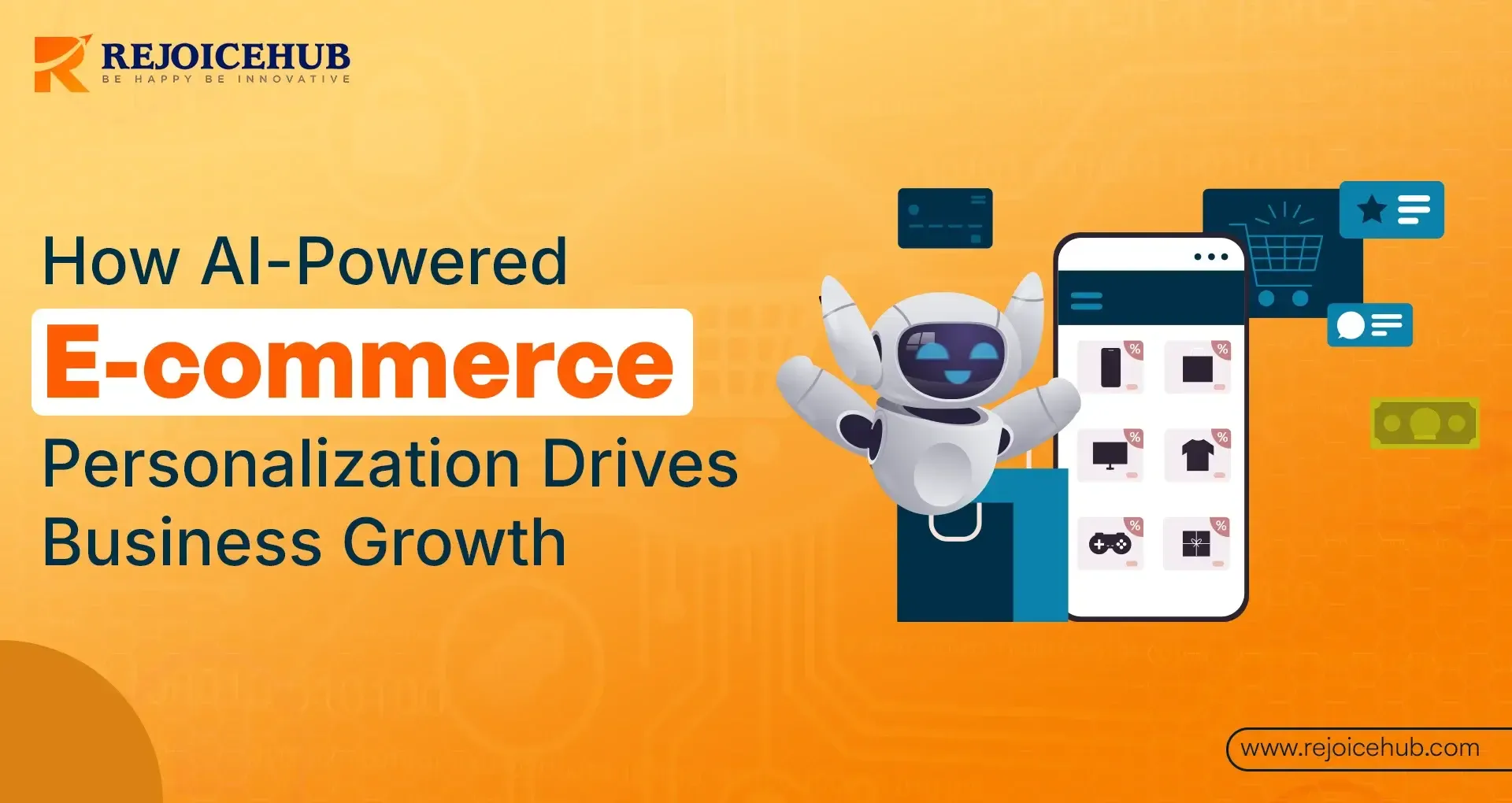
AI-driven e-commerce personalization is a groundbreaking approach to online shopping, where artificial intelligence analyzes customer data to provide customized shopping experiences tailored to individual preferences and behaviors. This technology revolutionizes the way businesses engage with their customers by creating unique and relevant interactions at every stage of the buying process.
As the digital retail industry becomes more competitive, customers now expect personalized experiences that anticipate their needs even before they express them. Accelerating growth through personalized shopping experiences has become essential for survival in today's market.
By using AI, you can gain a competitive edge for your business by implementing advanced algorithms that analyze large amounts of customer data, such as browsing habits and purchase history. This intelligent analysis allows you to understand your customers better, recommend products that are likely to interest them, and customize content on-the-fly. The outcome? Higher conversion rates, greater customer loyalty, and sustainable business growth that goes beyond short-term sales increases.
Companies that adopt AI-driven e-commerce personalization position themselves as leaders in retail innovation, creating unique advantages that lead to long-term success.
Understanding the Role of AI in E-Commerce Personalization
How Machine Learning Algorithms Power E-Commerce Personalization
Machine learning algorithms are the backbone of modern e-commerce personalization systems. These advanced algorithms analyze customer behavior patterns, learning from each interaction to predict future preferences and actions. You can use collaborative filtering algorithms to find customers with similar tastes, while content-based filtering algorithms match products to individual customer traits. Deep learning neural networks handle complex data relationships, allowing your platform to grasp subtle customer preferences that traditional analytics might overlook.
The Impact of Natural Language Processing on Customer Understanding
Natural language processing (NLP) changes how you understand customer intent and sentiment. This technology examines customer reviews, search queries, and support conversations to extract valuable insights about product preferences and pain points. NLP empowers your chatbots to grasp context and offer relevant product recommendations through conversational interfaces, creating more user-friendly shopping experiences.
Building Effective Personalization Strategies Through Customer Data Analysis
Customer data analysis is crucial for developing effective personalization strategies. You can gather information from various sources to create detailed customer profiles:
- Browsing behavior: Time spent on pages, scroll patterns, click-through rates, and abandoned cart items
- Purchase history: Previous transactions, seasonal buying patterns, brand preferences, and price sensitivity
- Demographics: Age, location, gender, income level, and lifestyle indicators
- Social media activity: Shared content, liked products, and social network influences
- Device and channel preferences: Mobile vs. desktop usage, preferred communication channels
These data types work together to provide a complete view of each customer. By processing data in real-time, you can quickly adapt your personalization strategies based on changing customer behaviors and market conditions.
The combination of these AI technologies enables you to deliver precisely targeted experiences that resonate with individual customers at every touchpoint.
Key Components of an Effective AI-Powered Personalization Strategy
Building a robust AI-driven personalization framework requires several interconnected components working in harmony.
1. Product Recommendations
Product recommendations serve as the cornerstone of personalized shopping experiences, utilizing collaborative filtering and content-based algorithms to suggest items that align with individual customer preferences. Amazon's recommendation engine, which drives 35% of their revenue, demonstrates how sophisticated algorithms analyze purchase patterns, browsing history, and similar customer behaviors to deliver highly relevant suggestions.
2. Dynamic Content Customization
Dynamic content customization transforms static websites into adaptive platforms that respond to each visitor's unique profile. This technology adjusts everything from homepage layouts and banner images to product descriptions and pricing displays based on real-time user data. Sephora's website exemplifies this approach by showing different beauty products and tutorials depending on the customer's skin tone, previous purchases, and browsing behavior.
3. Targeted Marketing Campaigns
Targeted marketing campaigns leverage AI to deliver personalized messages across multiple channels. These campaigns use customer segmentation algorithms to identify the optimal timing, content, and delivery method for each individual. Netflix's email campaigns showcase this strategy by sending personalized show recommendations based on viewing history and preferences.
4. Chatbots
Chatbots powered by natural language processing provide instant, personalized customer support while gathering valuable interaction data. These AI assistants can recommend products, answer questions, and guide customers through their purchasing journey. H&M's chatbot on Kik helps customers discover outfits by asking about style preferences and occasions.
5. Predictive Analytics
Predictive analytics enables businesses to anticipate customer needs before they're explicitly expressed. This technology forecasts demand patterns, identifies potential churn risks, and suggests inventory adjustments. Spotify's Discover Weekly playlist uses predictive analytics to curate personalized music recommendations, keeping users engaged and reducing subscription cancellations.
These components create a comprehensive ecosystem where each element reinforces the others, generating increasingly accurate personalization as more customer data becomes available.
Benefits Beyond Sales: How AI-Driven Personalization Fuels Sustainable Business Growth
AI-driven personalization creates a ripple effect that extends far beyond immediate revenue increases. Customer engagement deepens when you deliver experiences that feel genuinely tailored to individual preferences and behaviors. This heightened engagement translates into measurable business outcomes that compound over time.
Brand loyalty strengthens as customers develop trust in your ability to understand their needs. When your platform consistently surfaces relevant products and content, customers begin to view your brand as their preferred shopping destination. This loyalty becomes a competitive moat that protects against market fluctuations and competitor pressures.
The impact on conversion rates extends beyond single transactions. Personalized experiences reduce friction throughout the customer journey, making it easier for visitors to find what they need. This streamlined experience directly addresses cart abandonment reduction by presenting relevant alternatives when customers hesitate and providing timely incentives based on browsing patterns.
Data retention and customer lifetime value see significant improvements through personalized experiences. You build comprehensive customer profiles that enable increasingly accurate predictions about future purchasing behavior. These insights allow you to:
- Optimize inventory management based on predicted demand patterns
- Develop targeted retention campaigns for at-risk customers
- Create personalized loyalty programs that resonate with individual preferences
- Identify cross-selling and upselling opportunities with higher success rates
Accelerating Growth with AI-Driven E-commerce Personalization becomes sustainable when these benefits reinforce each other. Engaged customers provide more data, which improves personalization accuracy, which drives higher engagement—creating a virtuous cycle that compounds your competitive advantage and establishes long-term market positioning.
Also read: How to Use AI in E-commerce Business in 2025
Challenges and Considerations in Implementing AI-Driven Personalization Strategies
Implementing AI-driven personalization strategies presents several critical obstacles that you must navigate carefully to ensure successful deployment.
1. Data Privacy Issues
Data privacy issues represent one of the most significant hurdles facing businesses today. You need to comply with regulations like GDPR, CCPA, and other regional privacy laws while collecting and processing customer data for personalization purposes. The challenge intensifies when you consider that effective personalization requires extensive data collection across multiple touchpoints, creating potential conflicts between personalization depth and privacy protection.
2. Algorithmic Bias Risks
Algorithmic bias risks pose another substantial concern that can undermine your personalization efforts. Your AI systems may inadvertently discriminate against certain customer segments based on historical data patterns, leading to unfair treatment or exclusion of specific demographics. This bias can manifest in product recommendations, pricing strategies, or content delivery, potentially damaging your brand reputation and creating legal liabilities.
3. Technical Implementation Challenges
Technical implementation challenges include:
- Data quality and integration - Ensuring clean, consistent data across multiple systems
- Resource allocation - Balancing personalization investments with other business priorities
- Skill gaps - Finding qualified AI and data science talent
- System scalability - Managing performance as data volumes and user bases grow
4. Customer Trust Concerns
You must also address customer trust concerns, as overly aggressive personalization can feel intrusive and push customers away. Striking the right balance between helpful customization and respectful boundaries requires careful testing and continuous refinement of your personalization algorithms.
Future Trends Shaping the Next Era of E-Commerce Personalization with AI
Emerging advancements in artificial intelligence technology are set to transform how businesses deliver personalized shopping experiences. You can expect to see revolutionary changes that will redefine customer engagement across digital platforms.
1. Generative AI for Dynamic Content Creation
Generative AI will enable real-time creation of personalized product descriptions, marketing copy, and visual content tailored to individual customer preferences. This technology allows you to generate unique product presentations that speak directly to each shopper's interests and communication style.
2. Voice Commerce Integration for Conversational Shopping
Voice commerce integration through advanced natural language processing will create conversational shopping experiences. You'll be able to offer customers the ability to browse, compare, and purchase products through sophisticated voice interactions that understand context and intent.
3. Augmented Reality Personalization for Immersive Experiences
Augmented reality personalization will let customers visualize products in their own environments before purchasing. You can provide virtual try-on experiences and customized product demonstrations that adapt to individual customer spaces and preferences.
4. Predictive Personalization for Anticipating Customer Needs
Predictive personalization powered by advanced machine learning will anticipate customer needs before they're explicitly expressed, enabling proactive product suggestions and inventory management that stays ahead of demand patterns.
Conclusion
Accelerating Growth with AI-Driven E-commerce Personalization is more than just an upgrade in technology it's your way to gain a lasting advantage over competitors. The businesses that will succeed in the future are the ones who know how to provide a smooth shopping experience designed for each individual customer today.
You can't afford to see AI-powered personalization as something optional. Your customers expect relevance, want their needs to be understood, and demand experiences that feel specially made for them. The 92% of businesses already using AI for personalization aren't just trying things out they're establishing control over the market.
The choice is clear: start using AI-driven personalization now and lead your business into the world of e-commerce innovation, or risk becoming unimportant in a digital marketplace that values personalization more and more. Your customers are waiting for experiences that truly understand them.
Frequently Asked Questions
1. What is AI-driven e-commerce personalization?
AI-driven e-commerce personalization is the use of artificial intelligence to analyze customer data such as browsing habits, purchase history, and demographics to create customized shopping experiences tailored to individual preferences.
2. How does AI improve personalization in online shopping?
AI improves personalization by using machine learning and natural language processing to recommend products, customize content, predict customer needs, and deliver targeted marketing campaigns in real-time.
3. Why is e-commerce personalization important for business growth?
E-commerce personalization increases conversion rates, builds customer loyalty, reduces cart abandonment, and enhances customer lifetime value, making it essential for long-term business growth.
4. What technologies power AI-driven personalization in e-commerce?
Key technologies include machine learning algorithms, natural language processing (NLP), predictive analytics, chatbots, and generative AI for dynamic content creation.
5. What are some examples of AI personalization in e-commerce?
Examples include Amazon’s product recommendations, Sephora’s dynamic content based on skin tone and browsing history, Netflix’s personalized emails, and Spotify’s Discover Weekly playlist.
